Are you looking for an efficient and accessible way to shed those extra pounds and achieve your weight loss goals? Look no further than calisthenics exercises.
As an expert weight loss trainer, I’ve witnessed the transformative power of calisthenics routines firsthand. In this article, we will explore the world of effective calisthenics routines for weight loss and discover how they can help you burn fat, build muscle, and improve your overall fitness.
Whether you’re a beginner or a seasoned fitness enthusiast, this comprehensive guide will provide you with the knowledge and tools you need to create a successful calisthenics routine that will take your weight loss journey to new heights.
Get ready to unlock the potential of your body and witness the incredible results that calisthenics can offer.
Benefits of Calisthenics Exercises for Weight Loss
Calisthenics, often referred to as bodyweight training, offers a multitude of benefits for weight loss that are backed by research and supported by countless success stories. If you’re looking to shed those extra pounds, calisthenics should be at the top of your fitness routine. Here are some key benefits of calisthenics for weight loss that will not only grab your attention but also provide you with the evidence you need to get started:
1. Efficient Fat Burning:
Calisthenics exercises, such as burpees, mountain climbers, jumping jacks, and high-intensity interval training (HIIT) routines, engage multiple muscle groups simultaneously, leading to increased calorie expenditure. This high-intensity workout style stimulates your metabolism and promotes fat burning. According to a study published in the Journal of Strength and Conditioning Research, high-intensity calisthenics workouts can burn up to 10 calories per minute, making them highly effective for weight loss (1). By incorporating these exercises into your routine, you can maximize your fat-burning potential and achieve your weight loss goals.
2. Muscle Building:
Building lean muscle mass is essential for weight loss, as muscles burn more calories at rest than fat. Calisthenics exercises, such as push-ups, squats, lunges, and pull-ups, target major muscle groups, promoting muscle growth and strength development. Regular calisthenics training not only helps you shed unwanted pounds but also sculpts and tones your body.
A study published in the Journal of Sports Science & Medicine demonstrated that participants who engaged in calisthenics training significantly increased their muscle mass (2). By incorporating these muscle-building exercises into your routine, you can enhance your physique and improve your overall strength and athleticism.
Also Try-
3. Improved Metabolism:
Regular calisthenics workouts can boost your metabolism, leading to increased calorie burn throughout the day. High-intensity calisthenics exercises, like interval training and circuit workouts, can cause your metabolic rate to remain elevated even after you finish your workout. This phenomenon, known as excess post-exercise oxygen consumption (EPOC) or the afterburn effect, results in enhanced fat oxidation. A study published in the European Journal of Applied Physiology found that high-intensity calisthenics exercises elevated participants’ metabolic rates for up to 24 hours post-workout (3). By incorporating these metabolism-boosting exercises into your routine, you can maximize your calorie burn and accelerate your weight loss journey.
4. Enhanced Cardiovascular Health:
Calisthenics routines often incorporate cardio exercises like jumping rope, high knees, and mountain climbers. These exercises elevate your heart rate and improve cardiovascular endurance, leading to a healthier heart and improved overall fitness. Research published in the Journal of Sports Science & Medicine suggests that calisthenics-based workouts can improve cardiovascular health markers, such as maximal oxygen uptake (VO2 max) (4). By consistently engaging in calisthenics, you can strengthen your heart, lower your resting heart rate, and reduce the risk of cardiovascular diseases. These cardiovascular benefits not only support weight loss but also improve your overall well-being.
5. Versatility and Accessibility:
One of the greatest advantages of calisthenics is its versatility and accessibility. You can perform calisthenics exercises anywhere, without the need for expensive equipment or a gym membership. This makes it a convenient and cost-effective option for individuals looking to lose weight and stay fit. Whether you’re at home, in a park, or traveling, you can engage in a full-body calisthenics workout using your body weight as resistance. A study published in the Journal of Human Sport and Exercise highlights the accessibility and inclusivity of calisthenics, making it suitable for people of all ages and fitness levels (5). By incorporating calisthenics into your routine, you can overcome barriers to exercise and make consistent progress towards your weight loss goals.
6. Functional Strength and Flexibility:
Calisthenics exercises focus on functional movements that mimic everyday activities, improving your strength and flexibility. Movements like push-ups, planks, bodyweight squats, and lunges enhance your ability to perform daily tasks and prevent injuries. By strengthening the muscles involved in daily movements, you’ll experience greater efficiency and reduced strain on your body. Furthermore, a study published in the International Journal of Sports Physical Therapy suggests that calisthenics training can significantly improve flexibility, leading to increased range of motion and reduced muscle stiffness (6). This enhanced flexibility not only aids in weight loss but also enhances overall mobility and posture, allowing you to move more freely and perform exercises with proper form.
Warm-up Exercises
A proper warm-up is crucial before engaging in any physical activity, including calisthenics. It prepares your body for the upcoming workout, increases blood flow to the muscles, enhances flexibility, and reduces the risk of injuries. To ensure you have an effective warm-up session, here are some informative steps to follow:
1. Start with Light Cardio:
Begin your warm-up with 5-10 minutes of light cardiovascular exercises such as brisk walking, jogging, or cycling. This elevates your heart rate, increases body temperature, and gradually prepares your muscles for more intense movements. You can also include exercises like jumping jacks, jump rope, or high knees to add variety and engage multiple muscle groups.
2. Joint Mobility Exercises:
Perform a series of joint mobility exercises to increase the range of motion and lubricate your joints. Include movements such as neck circles, shoulder rotations, arm swings, hip circles, and ankle rolls. These exercises help to improve joint mobility, loosen up tight muscles, and reduce the risk of strains or sprains. Perform each movement for 10-15 repetitions in a controlled manner.
3. Dynamic Stretching:
Follow joint mobility exercises with dynamic stretches that target the major muscle groups involved in calisthenics. Dynamic stretching involves continuous movement and helps to improve flexibility and muscle activation. Include exercises like leg swings (forward and sideways), walking lunges with a twist, arm circles (forward and backward), and torso rotations. Perform 10-12 repetitions for each exercise, gradually increasing the range of motion with each repetition.
4. Activation Exercises:
Activate the specific muscles that will be engaged during your calisthenics routine. For example, if you plan to do push-ups, perform exercises like shoulder taps, chest openers, or scapular push-ups to activate the muscles of the upper body. If you’re focusing on lower body exercises, include exercises like bodyweight squats or glute bridges. These activation exercises help to prime your muscles and improve muscle recruitment during your workout. Perform 8-10 repetitions of each activation exercise.
5. Practice Movement Patterns:
Before diving into the full calisthenics’ movements, practice the specific movement patterns involved. For instance, if you plan to do pull-ups, perform scapular retractions or assisted pull-ups to rehearse the correct form and engage the targeted muscles. This helps to reinforce proper movement patterns, activate the appropriate muscle groups, and ensure better performance during your actual workout. Perform 5-8 repetitions of each movement pattern exercise.
6. Gradually Increase Intensity:
Throughout your warm-up, gradually increase the intensity of the exercises to further prepare your body. This can be done by increasing the range of motion, speed, or resistance, depending on the specific exercise. For example, you can increase the depth of your squats, the height of your jumps, or the speed of your arm swings. This progressive increase in intensity helps to warm up your muscles and prepares them for the upcoming calisthenics routine.
5 Calisthenics Workout Routine
The Fat-Burning Circuit
This circuit combines various exercises to target multiple muscle groups while keeping your heart rate elevated. Remember to warm up before starting any exercise routine and adjust the intensity and repetitions based on your fitness level.
Perform each exercise in the circuit back-to-back with minimal rest between exercises. After completing the entire circuit, take a short break and repeat for the desired number of rounds. Let’s dive into the fat-burning circuit calisthenics exercises routine:
Jumping Jacks:
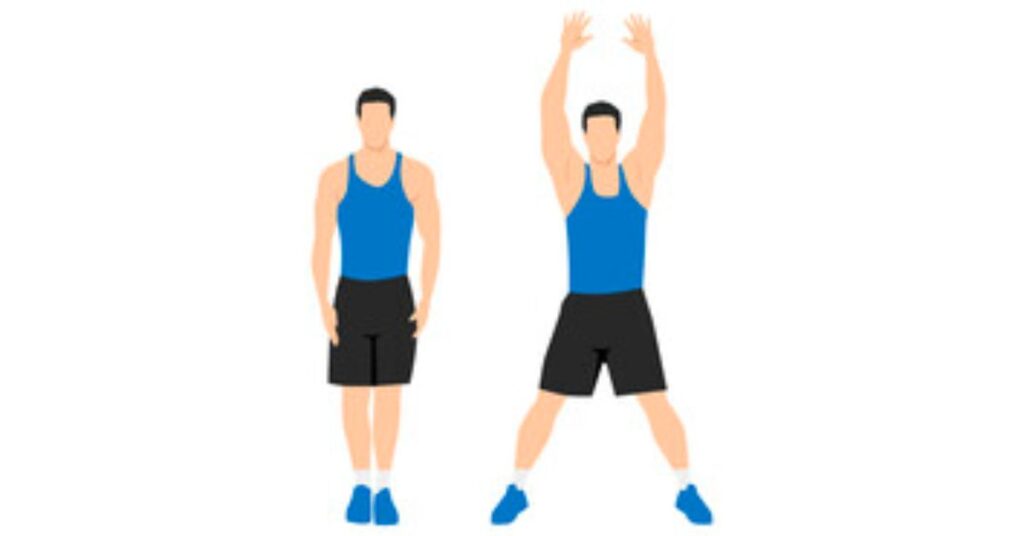
Jumping jacks are a great full-body warm-up exercise that elevates your heart rate and targets your legs and shoulders.
- Start with your feet together and arms by your sides.
- Jump, spreading your legs wider than hip-width apart while raising your arms overhead.
- Quickly return to the starting position by jumping again and bringing your feet together while lowering your arms.
- Repeat for 30-60 seconds.
High Knees:

High knees engage your core, glutes, and leg muscles while providing a cardiovascular challenge.
- Stand with your feet hip-width apart.
- Lift your right knee as high as possible while driving your left arm forward.
- Quickly switch legs, driving your right arm forward and lifting your left knee.
- Continue alternating legs in a running motion, focusing on speed and intensity.
- Perform for 30-60 seconds.
Bodyweight Squats:
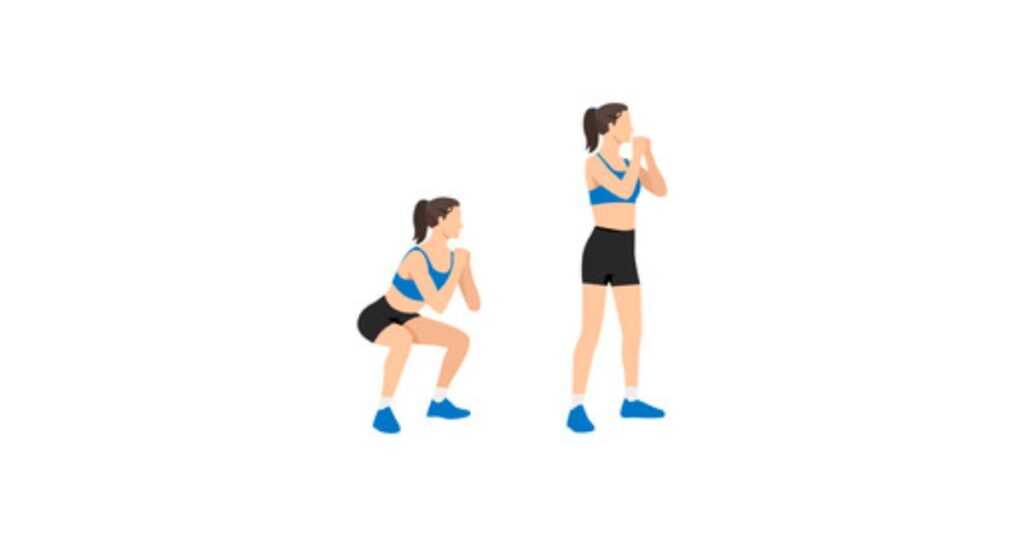
Bodyweight squats target your quadriceps, hamstrings, and glutes while also engaging your core.
- Stand with your feet shoulder-width apart.
- Lower your body into a squat position by bending your knees and pushing your hips back.
- Keep your chest up, back straight, and core engaged.
- Push through your heels to return to the starting position.
- Aim for 10-15 repetitions.
Push-Ups:
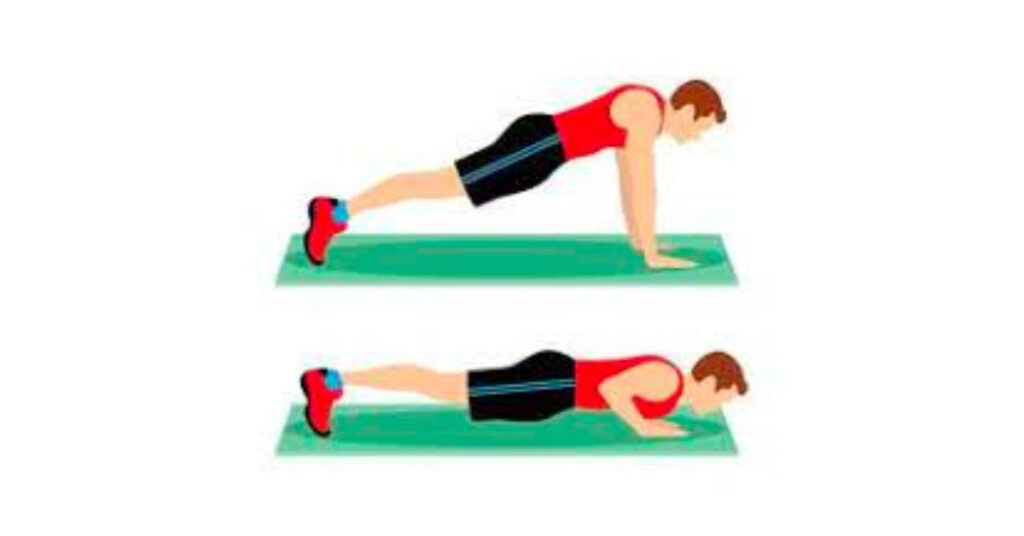
Push-ups are a classic exercise that targets your chest, shoulders, triceps, and core.
- Start in a high plank position with your hands slightly wider than shoulder-width apart.
- Lower your body by bending your elbows, keeping them close to your sides.
- Push through your hands to return to the starting position.
- Perform as many push-ups as you can with proper form.
- If needed, modify by performing push-ups from your knees.
- Aim for 10-15 repetitions.
Mountain Climbers:
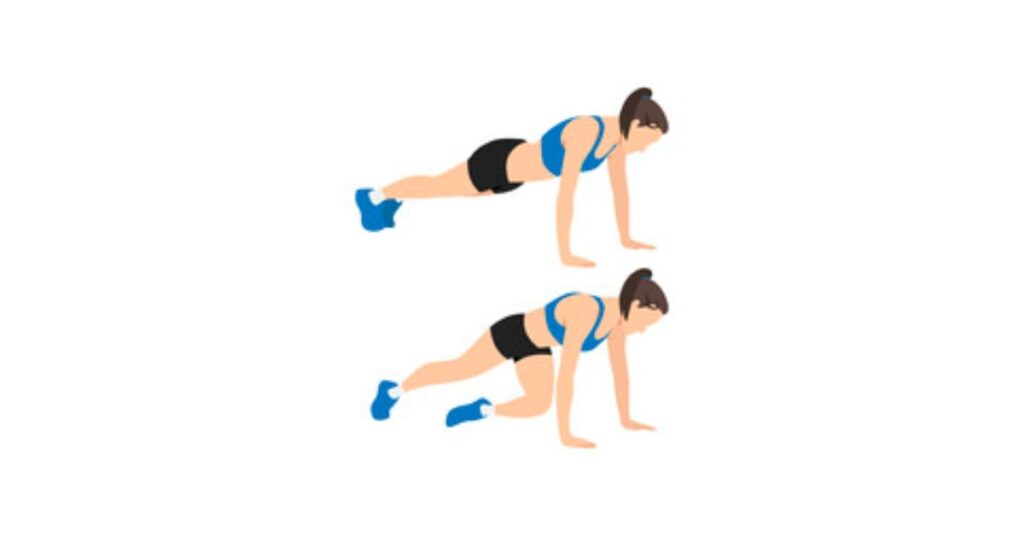
Mountain climbers engage your core, shoulders, chest, and legs while providing a cardiovascular challenge.
- Start in a high plank position with your hands shoulder-width apart.
- Keep your core engaged and bring one knee toward your chest, then quickly switch legs, as if you’re running in place.
- Maintain a steady and controlled pace, alternating legs.
- Perform for 30-60 seconds.
Plank:
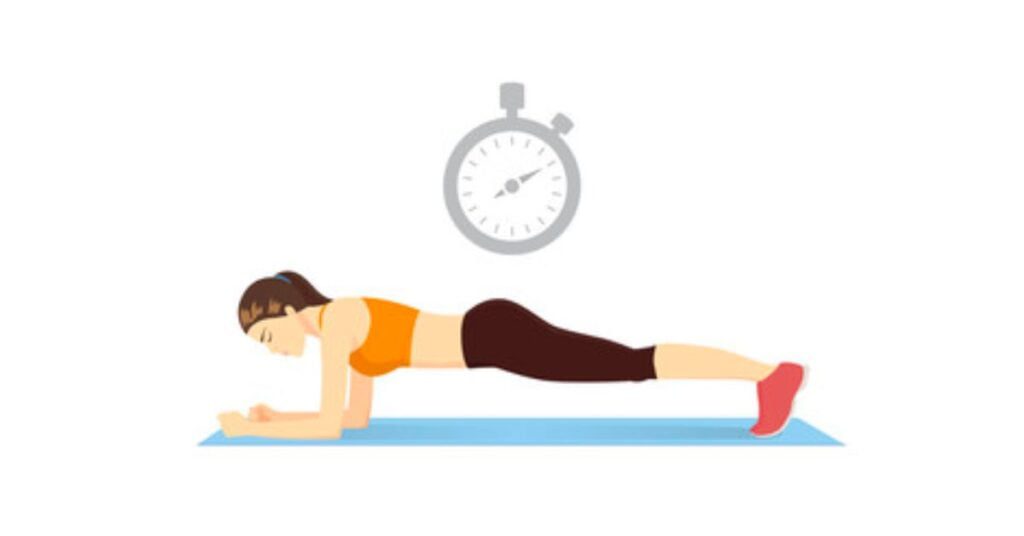
Planks engage your entire core, including the rectus abdominis, obliques, and deep stabilizing muscles.
- Start in a high plank position with your hands shoulder-width apart and your body forming a straight line.
- Engage your core, squeeze your glutes, and hold the position.
- Make sure to keep your hips in line with your shoulders and avoid sagging or raising your hips too high.
- Aim to hold the plank for 30-60 seconds.
Explore our comprehensive guide to effective fat-burning circuits.
The Core Crusher
By engaging various core muscles, this routine will help improve stability, enhance posture, and boost overall functional strength. Remember to warm up before starting any exercise routine and adjust the intensity and repetitions based on your fitness level.
Plank:
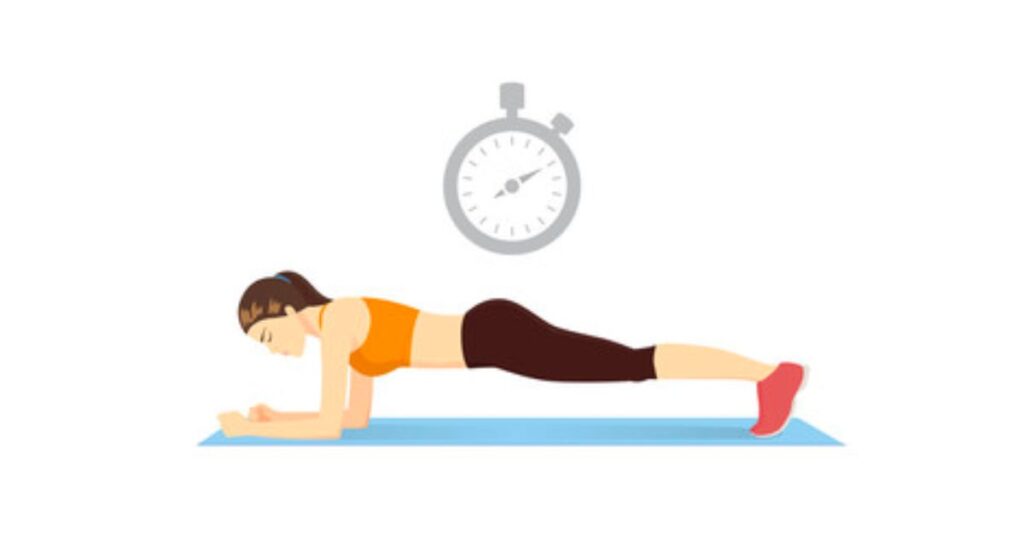
Planks are a foundational exercise that targets the entire core, including the rectus abdominis, obliques, and deep stabilizing muscles.
- Start in a high plank position with your hands shoulder-width apart and your body forming a straight line.
- Engage your core, squeeze your glutes, and hold the position.
- Make sure to keep your hips in line with your shoulders and avoid sagging or raising your hips too high.
- Aim to hold the plank for 30-60 seconds, gradually increasing the duration as you progress.
- Repeat for 3 sets.
Russian Twists:
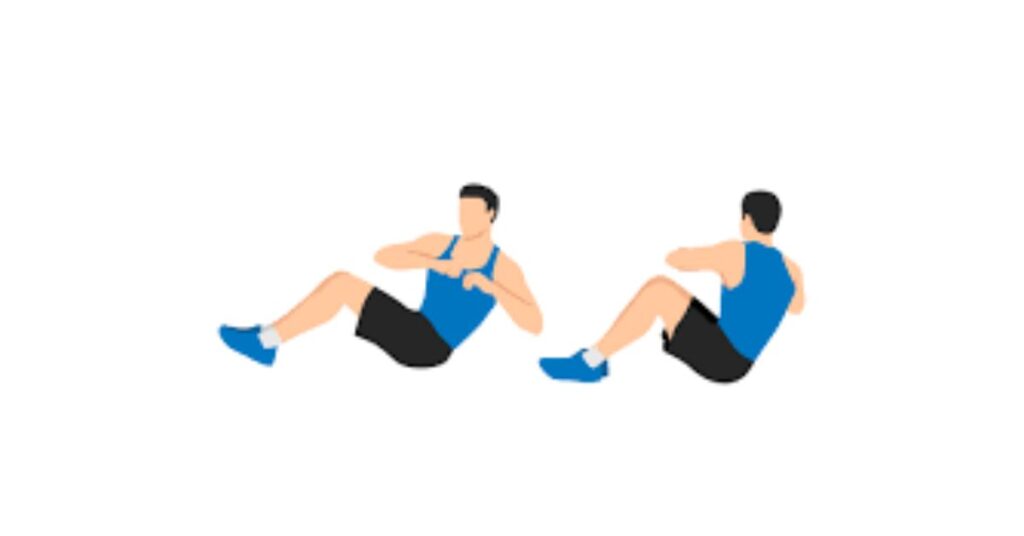
Russian twists primarily target the obliques and improve rotational stability.
- Sit on the ground with your knees bent and feet flat on the floor.
- Lean back slightly while maintaining a straight back and engage your core.
- Lift your feet off the ground, balancing on your sit bones.
- Twist your torso from side to side, touching the ground beside your hips with your hands.
- Maintain a controlled pace and focus on engaging your obliques.
- Aim for 3 sets of 10-15 repetitions on each side.
Leg Raises:

Leg raises effectively target the lower abs and hip flexors.
- Lie flat on your back with your arms by your sides and legs extended.
- Keep your lower back pressed against the ground to engage your core.
- Lift your legs off the ground while keeping them straight.
- Slowly lower your legs back down, stopping just before they touch the ground.
- Avoid using momentum and focus on using your core muscles to lift and lower your legs.
- Aim for 3 sets of 10-15 repetitions.
Bicycle Crunches:
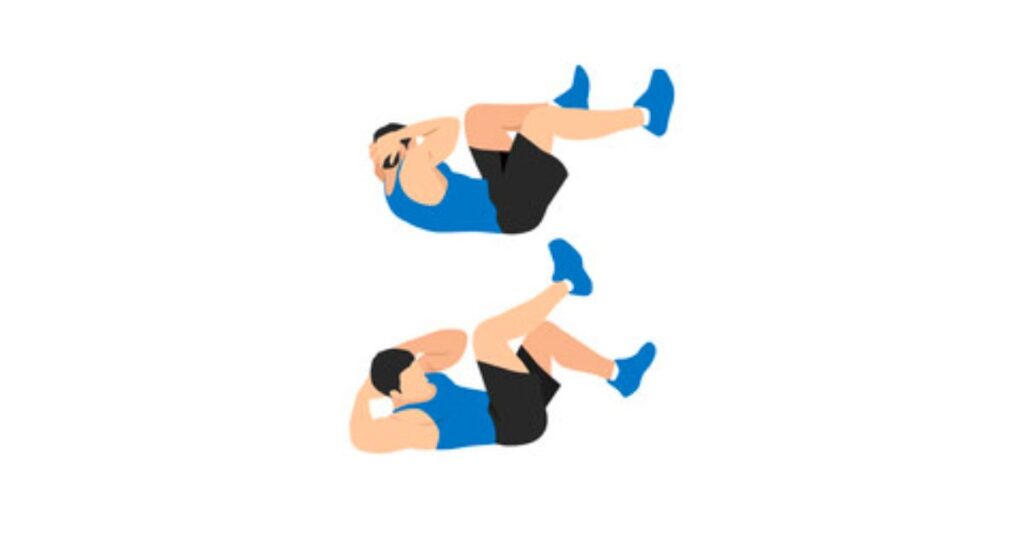
Bicycle crunches engage the entire core, including the rectus abdominis and obliques.
- Lie on your back with your knees bent and hands behind your head.
- Lift your shoulders off the ground, engaging your core.
- Bring your right elbow to your left knee while extending your right leg.
- Repeat on the other side, bringing your left elbow to your right knee while extending your left leg.
- Continue alternating sides in a fluid motion.
- Aim for 3 sets of 10-15 repetitions on each side.
Plank Hip Dips:
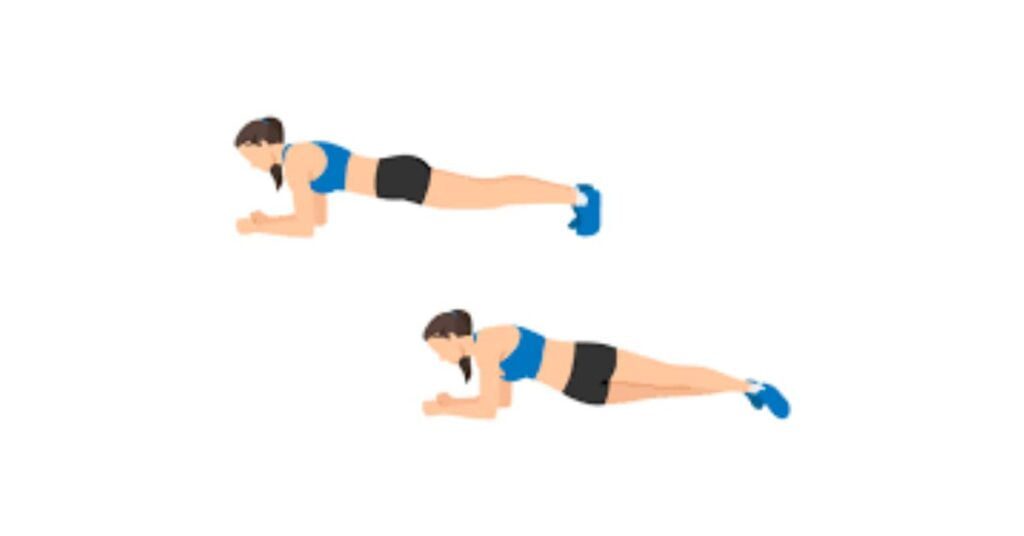
Plank hip dips target the obliques and build lateral core strength.
- Start in a forearm plank position with your elbows directly under your shoulders.
- Rotate your hips to one side, touching the ground with your hip, then return to the center.
- Repeat on the other side, alternating hip dips in a controlled manner.
- Maintain proper plank form and engage your core throughout the movement.
- Aim for 3 sets of 10-12 repetitions on each side.
Reverse Crunches:
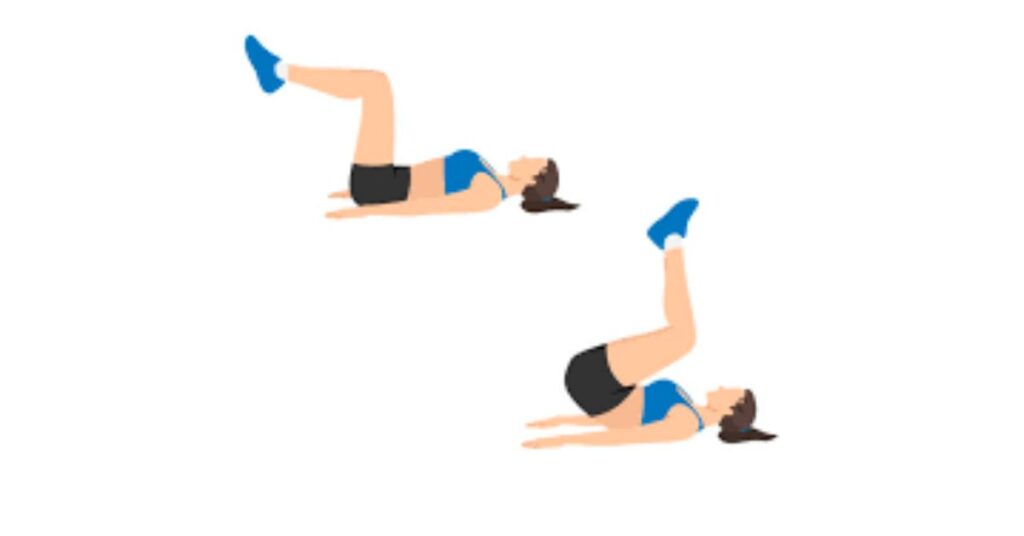
- Reverse crunches primarily target the lower abs.
- Lie on your back with your legs bent and feet lifted off the ground.
- Place your hands by your sides for stability.
- Use your lower abs to lift your hips off the ground, curling them toward your chest.
- Slowly lower your hips back down to the starting position.
- Focus on controlled movements and engaging your lower abs throughout the exercise.
- Aim for 3 sets of 10-15 repetitions.
Dive into detailed instructions and demonstrations for the Core Crusher routine.
The Full-Body Shredder
This full-body shredder calisthenics exercises routine will target multiple muscle groups, increase your heart rate, and leave you feeling energized. Remember to warm up before starting any exercise routine and adjust the intensity and repetitions based on your fitness level.
Burpees:
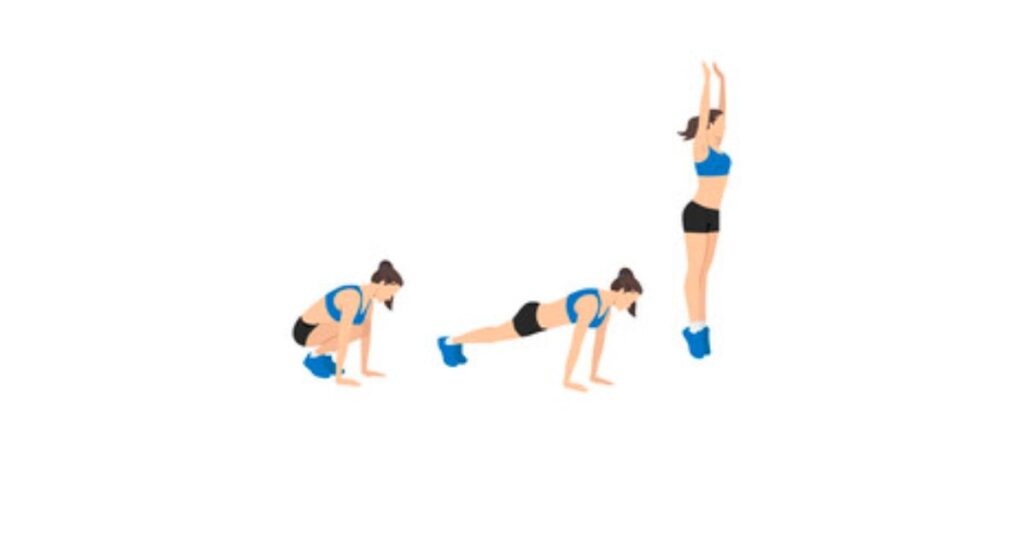
Burpees are a full-body exercise that targets the chest, shoulders, triceps, core, and legs.
- Start in a standing position with your feet shoulder-width apart.
- Lower yourself into a squat position and place your hands on the ground in front of you.
- Kick your feet back into a push-up position.
- Perform a push-up, keeping your body in a straight line.
- Jump your feet back to the squat position.
- Explosively jump up into the air, reaching your arms overhead.
- Land softly and immediately goes into the next repetition.
- Aim for 3 sets of 10-15 repetitions.
Mountain Climbers:
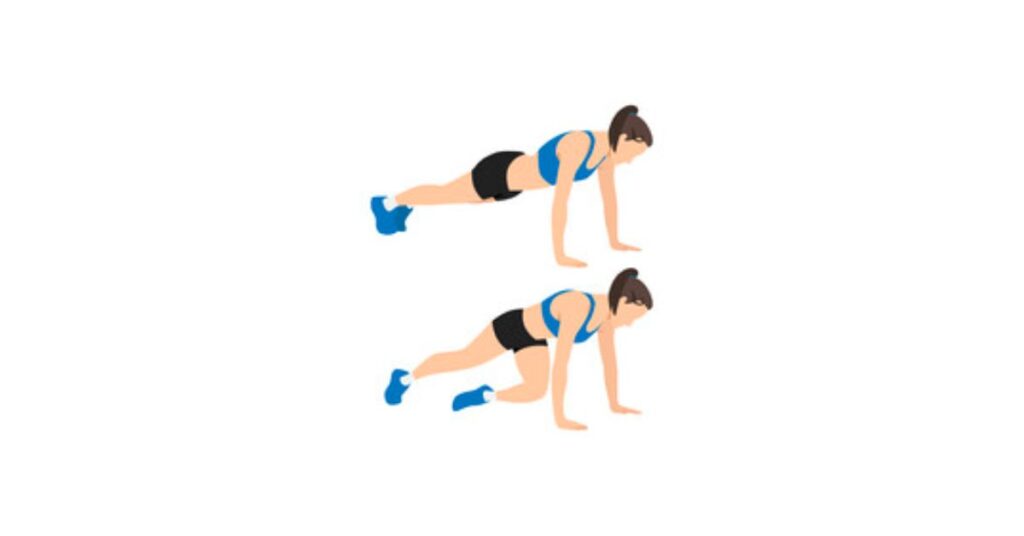
Mountain climbers engage your core, shoulders, chest, and legs while providing a cardiovascular challenge.
- Start in a high plank position with your hands shoulder-width apart.
- Keep your core engaged and bring one knee toward your chest, then quickly switch legs, as if you’re running in place.
- Maintain a steady and controlled pace, alternating legs.
- Aim for 3 sets of 20-30 seconds or as many repetitions as possible in a set time.
Jump Squats:
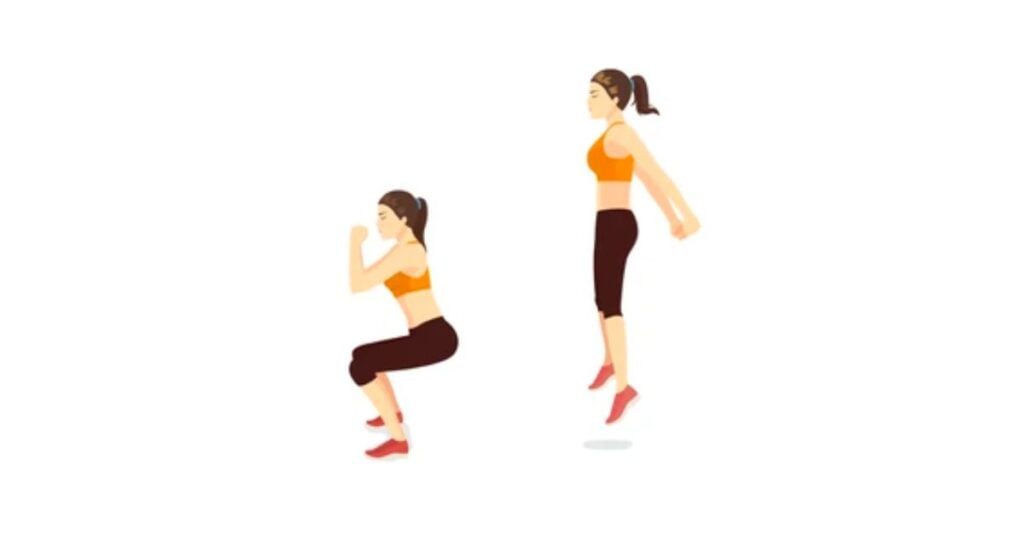
Jump squats are an explosive lower body exercise that targets the quadriceps, hamstrings, glutes, and calves.
- Stand with your feet shoulder-width apart.
- Lower your body into a squat position.
- Explosively jump up, reaching your arms overhead.
- Land softly and immediately goes into the next repetition.
- Aim for 3 sets of 10-15 repetitions.
Plank with Shoulder Taps:

This exercise targets the core, shoulders, and stabilizing muscles.
- Start in a high plank position with your hands shoulder-width apart.
- Engage your core and keep your body in a straight line.
- Lift one hand and tap the opposite shoulder, then switch sides.
- Continue alternating shoulder taps while maintaining proper plank form.
- Aim for 3 sets of 10-15 repetitions on each side.
Bicycle Crunches:
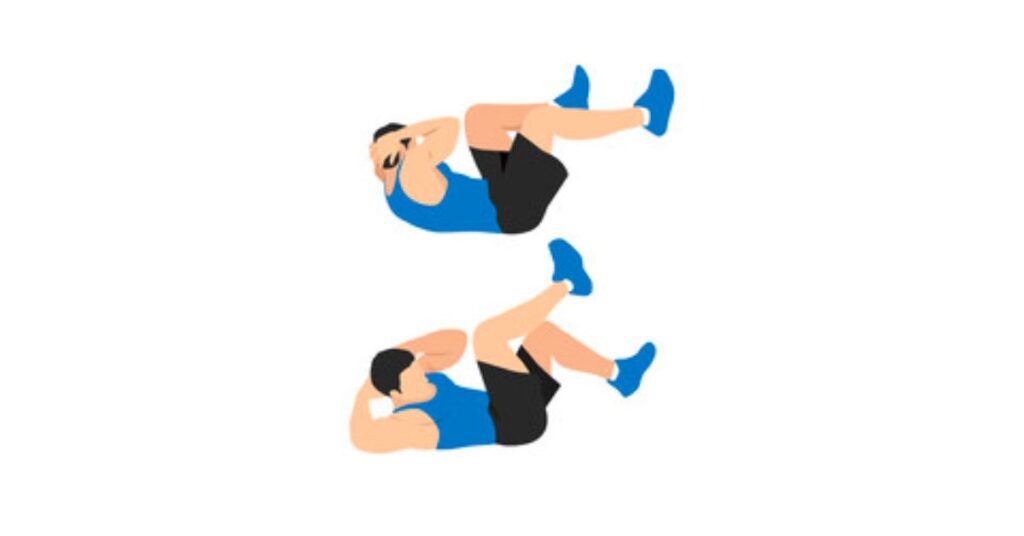
Bicycle crunches engage the entire core, including the rectus abdominis and obliques.
- Lie on your back with your knees bent and hands behind your head.
- Lift your shoulders off the ground, engaging your core.
- Bring your right elbow to your left knee while extending your right leg.
- Repeat on the other side, bringing your left elbow to your right knee while extending your left leg.
- Continue alternating sides in a fluid motion.
- Aim for 3 sets of 10-15 repetitions on each side.
Push-Ups:
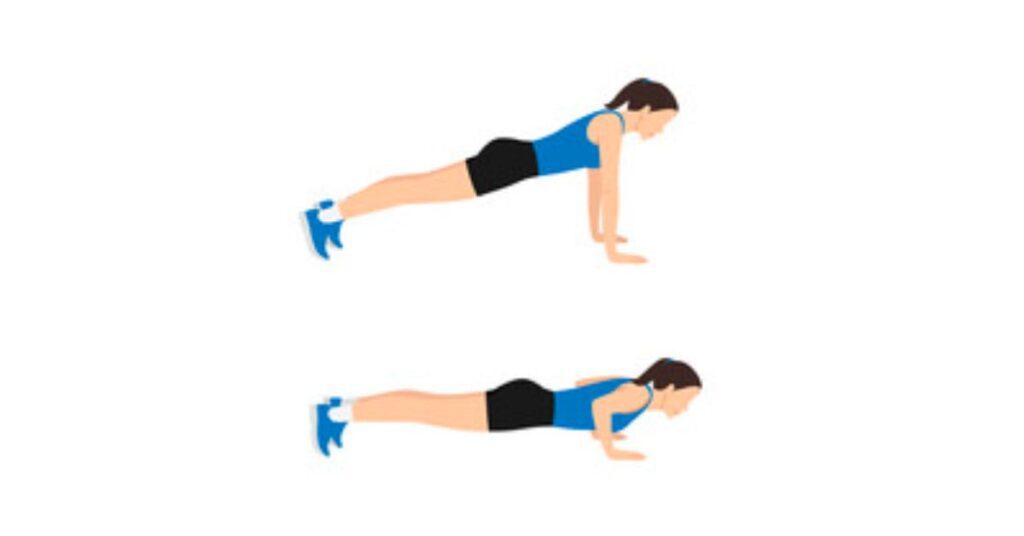
Push-ups are a classic upper body exercise that targets the chest, shoulders, triceps, and core.
- Start in a high plank position with your hands slightly wider than shoulder-width apart.
- Lower your body by bending your elbows, keeping them close to your sides.
- Push through your hands to return to the starting position.
- Aim for 3 sets of 10-15 repetitions.
Master the Full-Body Shredder with our step-by-step guide and visuals.
Lower Body Exercises
Incorporating lower body calisthenics exercises into your fitness routine can help strengthen your legs, improve your balance, and increase overall lower body muscular endurance. Below, you’ll find a sample lower body calisthenics exercises routine that you can incorporate into your workouts. Remember to warm up before starting any exercise routine and adjust the intensity and repetitions based on your fitness level.
Squats:
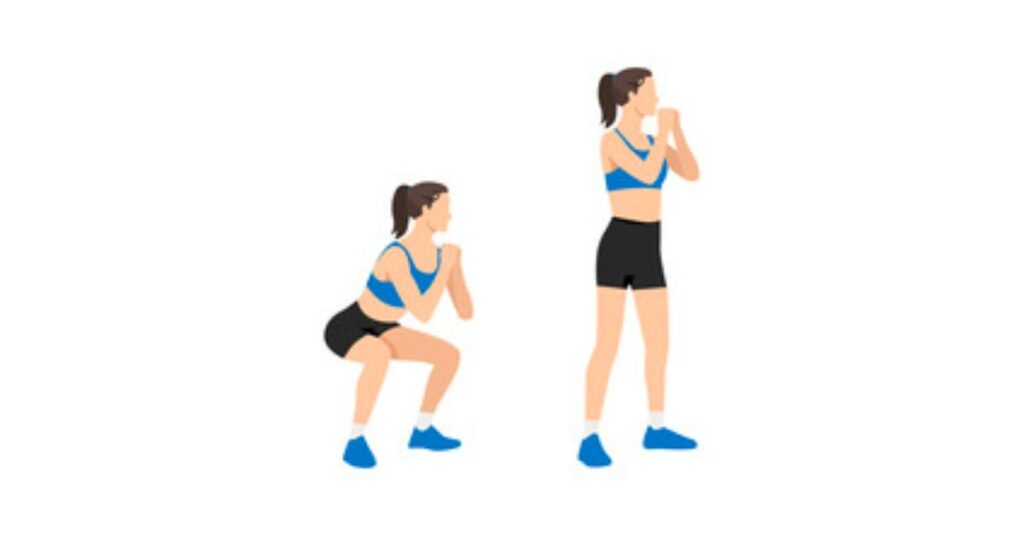
Squats are a fundamental lower body exercise that targets the quadriceps, hamstrings, and glutes.
- Stand with your feet shoulder-width apart.
- Lower your body by bending your knees and pushing your hips back as if you’re sitting down.
- Keep your chest up, back straight, and core engaged.
- Descend until your thighs are parallel to the ground.
- Push through your heels to return to the starting position.
- Aim for 3 sets of 10-15 repetitions.
Lunges:
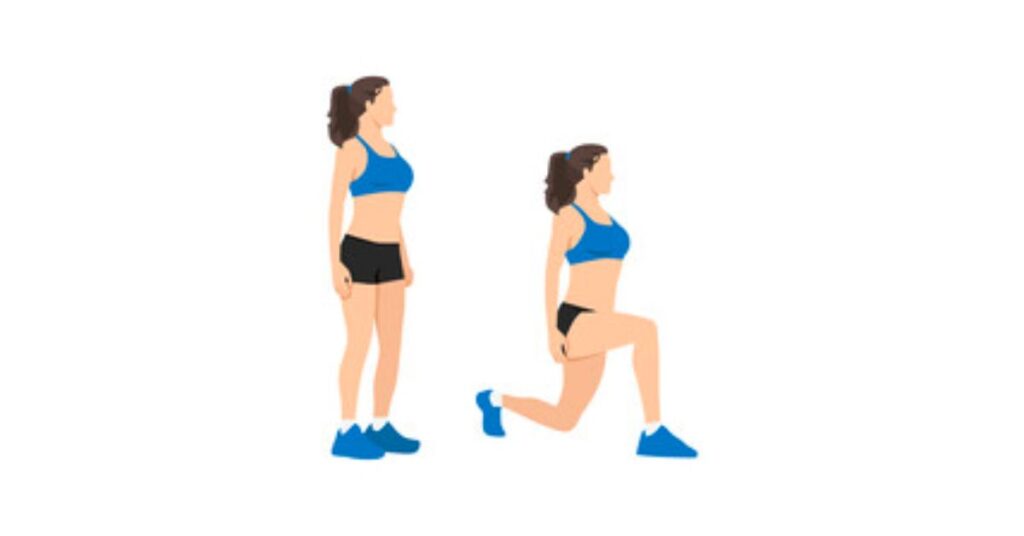
Lunges target the quads, hamstrings, glutes, and calves, and also help improve balance.
- Stand with your feet hip-width apart.
- Take a step forward with your right leg, lowering your body until both knees are bent at a 90-degree angle.
- Keep your upper body upright and your core engaged.
- Push off your front foot to return to the starting position.
- Repeat on the other side.
- Aim for 3 sets of 10-12 repetitions on each leg.
Glute Bridges:
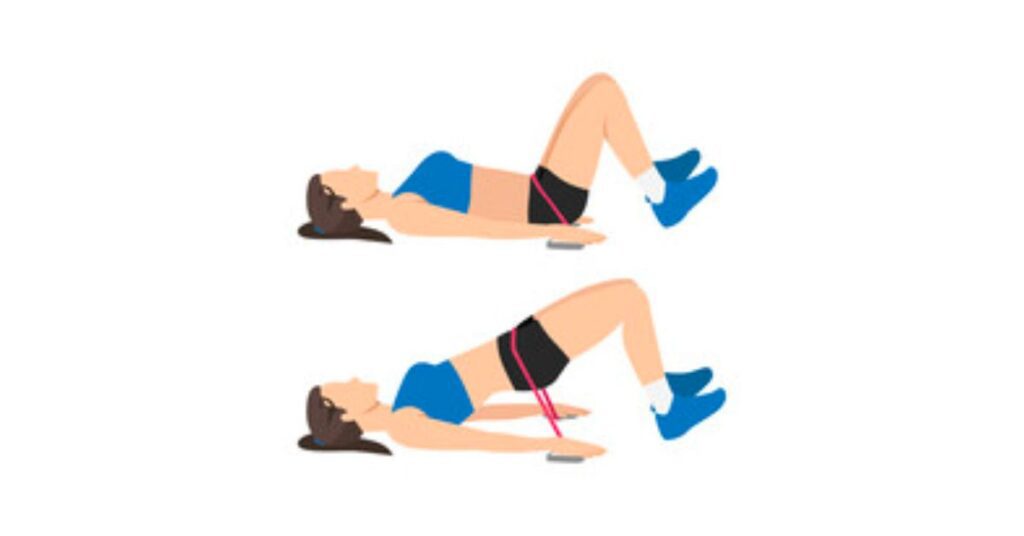
Glute bridges primarily target the glutes, hamstrings, and lower back.
- Lie on your back with your knees bent and feet flat on the ground, hip-width apart.
- Engage your core and squeeze your glutes.
- Lift your hips off the ground until your body forms a straight line from your knees to your shoulders.
- Pause for a moment at the top and then lower your hips back down.
- Aim for 3 sets of 12-15 repetitions.
Calf Raises:
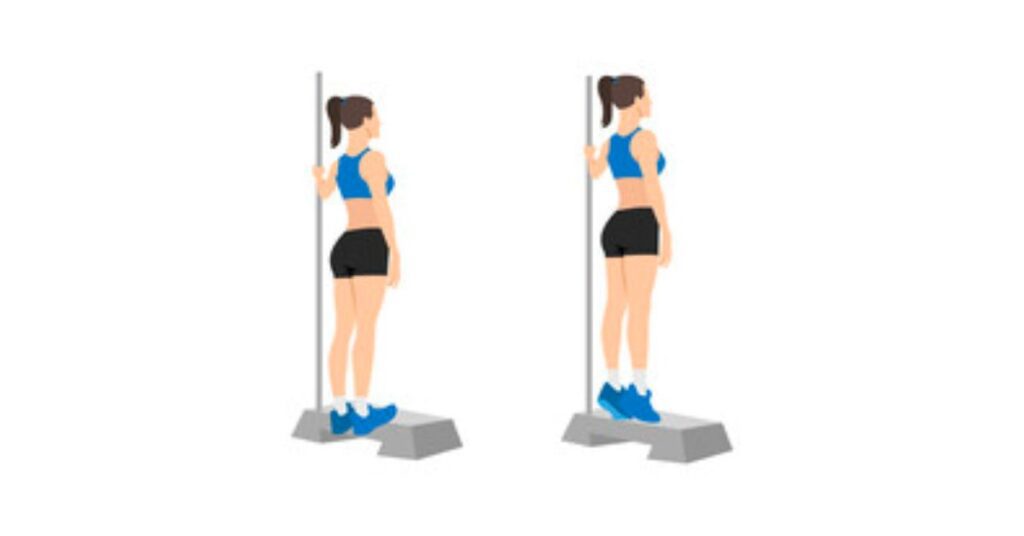
Calf raises target the calf muscles (gastrocnemius and soleus) and can be performed with or without a step or elevated surface.
- Stand with your feet hip-width apart, near a wall or sturdy support if needed.
- Rise up onto the balls of your feet, lifting your heels as high as possible.
- Pause at the top and then lower your heels back down to the starting position.
- For added challenge, perform the exercise on an elevated surface, allowing your heels to drop below parallel.
- Aim for 3 sets of 15-20 repetitions.
Step-Ups:
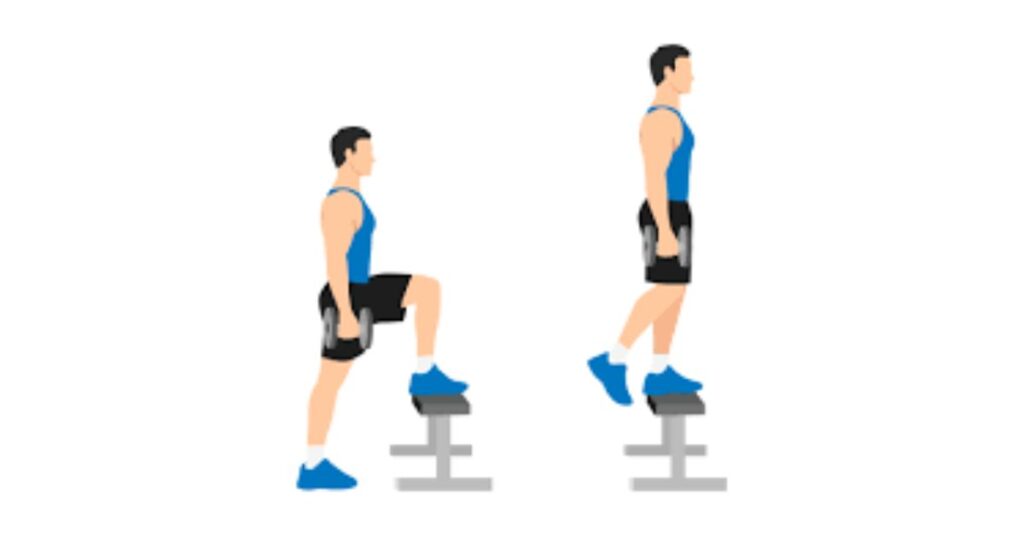
Step-ups target the quads, hamstrings, and glutes while also improving balance and coordination.
- Find a sturdy bench or step.
- Step onto the bench with one foot and press through your heel to lift your body up onto the bench.
- Step down with the opposite foot.
- Alternate the leading leg with each repetition.
- Aim for 3 sets of 10-12 repetitions on each leg.
Discover a variety of lower body exercises for a stronger and toned physique.
Upper Body Exercises
These exercises target specific muscle groups in your upper body while also engaging your core for stability. Remember to warm up before starting any exercise routine and adjust the intensity and repetitions based on your fitness level.
Push-Ups:
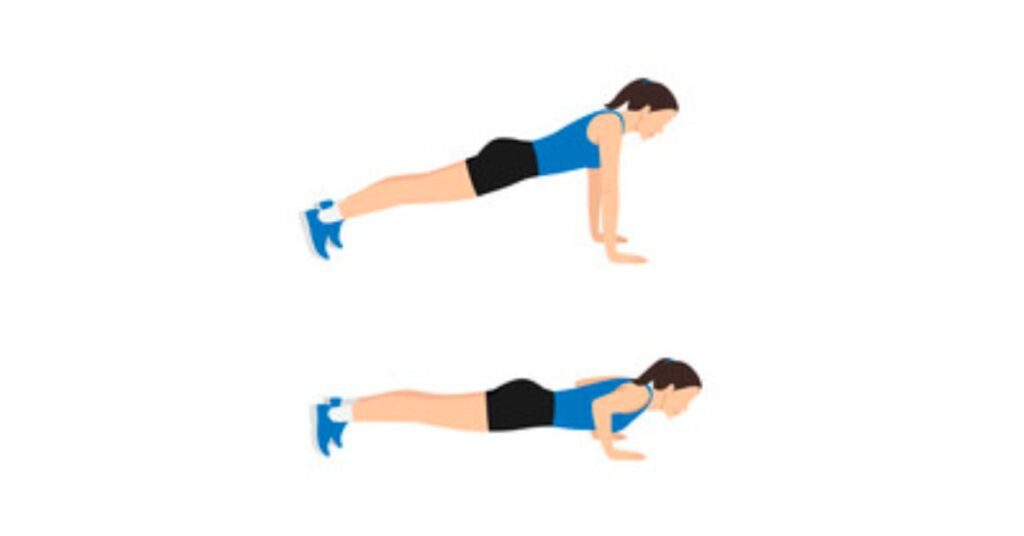
Push-ups are a classic exercise that targets your chest, shoulders, triceps, and core.
- Start in a high plank position with your hands slightly wider than shoulder-width apart.
- Lower your body by bending your elbows, keeping them close to your sides.
- Push through your hands to return to the starting position.
- If needed, modify by performing push-ups from your knees.
- Aim for 3 sets of 10-15 repetitions.
Diamond Push-Ups:
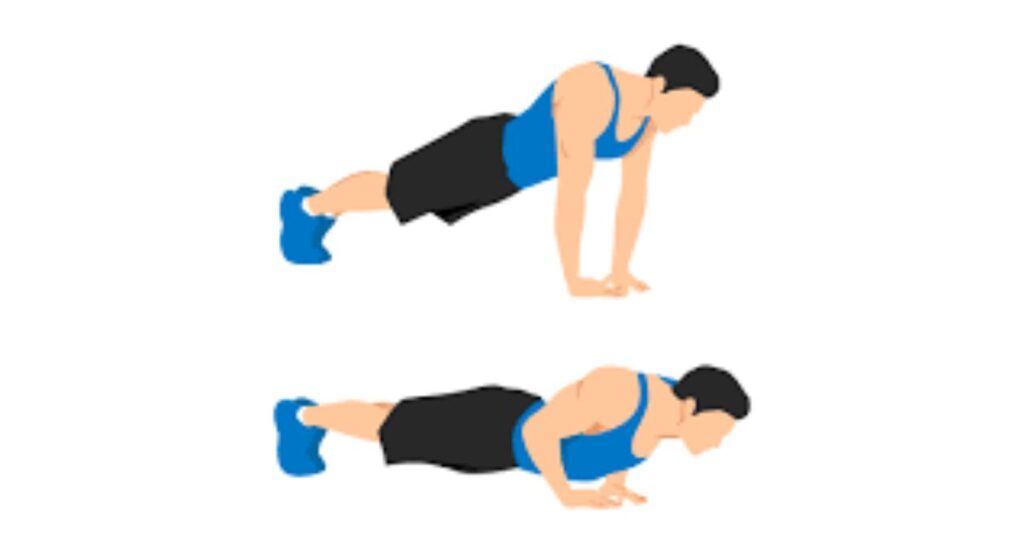
Diamond push-ups primarily target your triceps while also engaging your chest and shoulders.
- Start in a high plank position with your hands close together, forming a diamond shape with your thumbs and index fingers.
- Lower your body by bending your elbows, keeping them close to your sides.
- Push through your hands to return to the starting position.
- If needed, modify by performing diamond push-ups from your knees.
- Aim for 3 sets of 10-15 repetitions.
Dips:
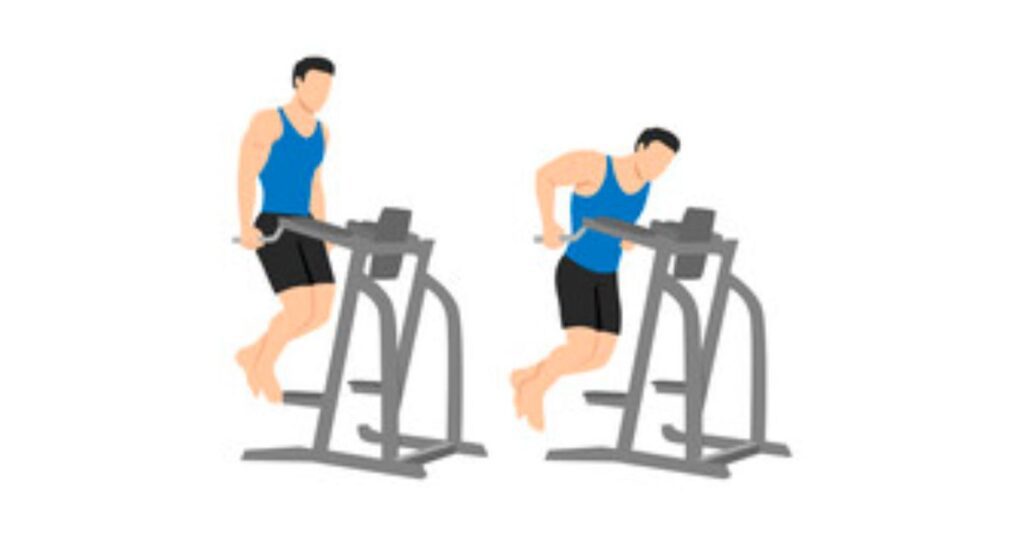
Dips are an effective exercise that targets your triceps, shoulders, and chest.
- Find parallel bars or use a sturdy chair or bench.
- Place your hands on the bars or the edge of the chair, gripping firmly.
- Lower your body by bending your elbows, keeping them close to your sides.
- Push through your hands to lift your body back up to the starting position.
- Aim for 3 sets of 8-12 repetitions.
Pike Push-Ups:
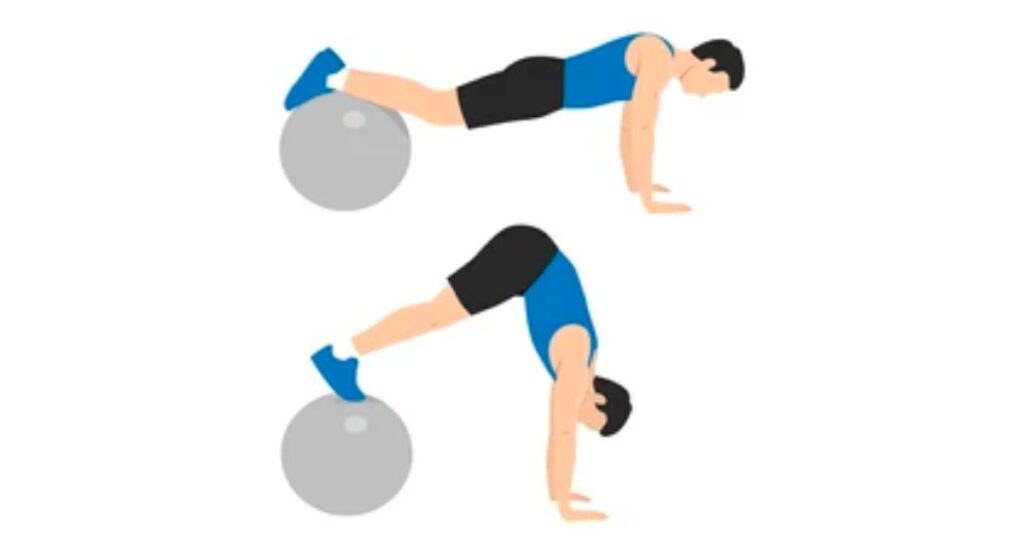
Pike push-ups primarily target your shoulders while also engaging your chest and triceps.
- Start in a downward dog position with your hands on the ground and your hips lifted, forming an inverted “V” shape.
- Lower your upper body by bending your elbows, keeping them close to your sides.
- Push through your hands to return to the starting position.
- Aim for 3 sets of 8-12 repetitions.
Superman Push-Ups:
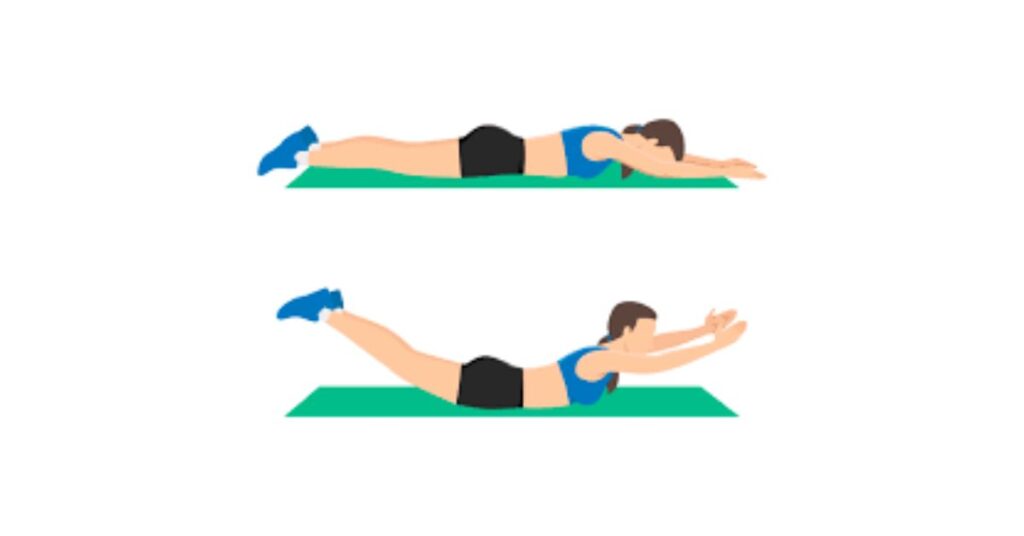
Superman push-ups target your chest, shoulders, triceps, and core while also improving balance and stability.
- Start in a high plank position with your hands slightly wider than shoulder-width apart.
- Lower your body by bending your elbows and simultaneously lift your right arm and left leg off the ground.
- Push through your hands to return to the starting position and alternate lifting the opposite arm and leg.
- Aim for 3 sets of 8-12 repetitions on each side.
Plank Shoulder Taps:
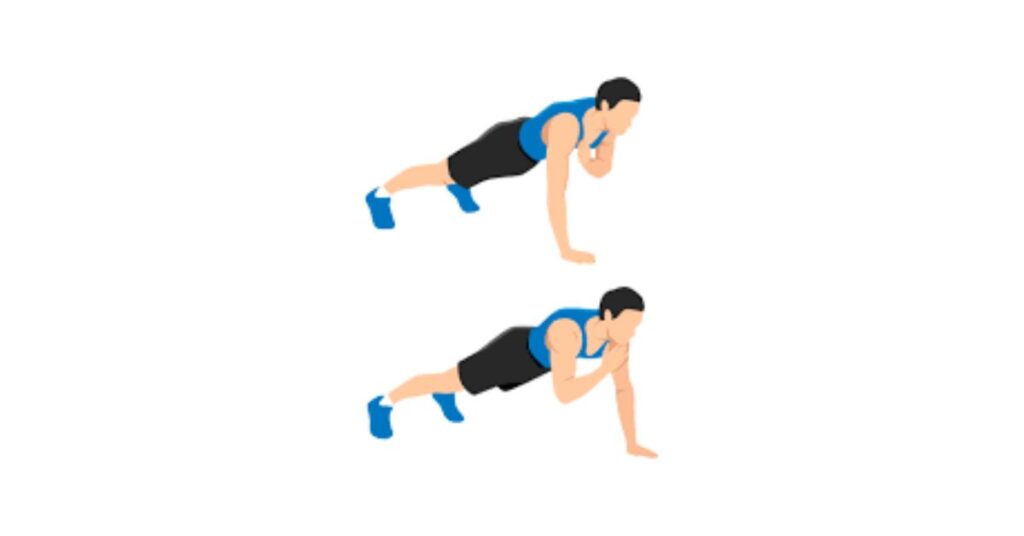
Plank shoulder taps engage your core, shoulders, and stabilizing muscles.
- Start in a high plank position with your hands shoulder-width apart.
- Engage your core and keep your body in a straight line.
- Lift one hand and tap the opposite shoulder, then switch sides.
- Continue alternating shoulder taps while maintaining proper plank form.
- Aim for 3 sets of 10-15 repetitions on each side.
Elevate your fitness journey with a range of upper body exercises and techniques.
Nutrition and Hydration
Proper nutrition and hydration are essential components of any fitness routine, including calisthenics. Fueling your body with the right nutrients and staying hydrated not only optimizes your performance during workouts but also supports muscle recovery and overall well-being. In this section, we will delve into the importance of nutrition and hydration for calisthenics, supported by research and evidence, to help you understand their impact and make informed choices.
1. Fueling for Energy:
Carbohydrates are the primary source of energy for physical activity. Research conducted by the American College of Sports Medicine suggests that consuming an adequate amount of carbohydrates before exercise can improve performance and delay fatigue (1). Focus on complex carbohydrates like whole grains, fruits, and vegetables, as they provide sustained energy release.
2. Protein for Recovery and Muscle Building:
Protein plays a crucial role in muscle repair and growth. According to a study published in the Journal of the International Society of Sports Nutrition, protein intake following resistance exercise enhances muscle protein synthesis and supports recovery (2). Include lean sources of protein such as poultry, fish, eggs, dairy, legumes, and plant-based protein options in your meals.
3. Hydration for Performance and Recovery:
Staying hydrated is vital for optimal performance and recovery. A study published in the Journal of Athletic Training found that even mild dehydration can impair physical performance and cognitive function (3). The American Council on Exercise recommends drinking 17 to 20 ounces of water two to three hours before exercise, and 7 to 10 ounces every 10 to 20 minutes during exercise (4). Adjust your fluid intake based on individual factors like intensity, duration, and sweat rate.
4. Electrolytes for Fluid Balance:
Electrolytes, such as sodium, potassium, and magnesium, play a crucial role in maintaining fluid balance and muscle function. During intense or prolonged exercise, electrolytes can be lost through sweat. Including electrolyte-rich foods such as bananas, oranges, spinach, and yogurt can help replenish these minerals (5).
5. Timing of Meals and Snacks:
The timing of your meals and snacks can impact energy levels and workout performance. The International Society of Sports Nutrition recommends consuming a balanced meal or snack containing carbohydrates and protein 2 to 3 hours before exercise (6). Additionally, consuming a post-workout meal or snack within 30 to 60 minutes after exercise can support muscle recovery and glycogen replenishment (7).
6. Individualized Approach:
It’s important to note that individual needs may vary based on factors like age, sex, body composition, and activity level. It’s advisable to consult with a registered dietitian or nutritionist to develop a personalized nutrition plan that aligns with your calisthenics goals and meets your specific needs.
Common Mistakes to Avoid
When engaging in calisthenics exercises, it’s important to be aware of common mistakes that can hinder your progress and potentially lead to injury. By understanding these mistakes and knowing how to avoid them, you can ensure that you’re getting the most out of your workouts. In this article, we will highlight some common mistakes to avoid in calisthenics, providing valuable insights to help you optimize your training and achieve your fitness goals safely and effectively.
1. Lack of Proper Warm-Up:
One of the most common mistakes is skipping or neglecting a proper warm-up. Failing to warm up adequately can increase the risk of muscle strains and other injuries. Prior to starting your calisthenics routine, spend at least 5-10 minutes performing dynamic stretches and light cardio exercises to increase blood flow, warm up your muscles, and improve mobility.
2. Poor Form and Technique:
Maintaining proper form and technique is crucial in calisthenics exercises. Performing exercises with improper form not only reduces their effectiveness but also increases the risk of injury. Take the time to learn and understand the correct form for each exercise. Focus on proper body alignment, engage the targeted muscles, and avoid excessive swinging or jerking movements.
3. Overtraining and Insufficient Rest:
Overenthusiasm can sometimes lead to overtraining, which can hinder your progress and increase the risk of burnout and injuries. Allow your body enough time to recover between workouts. Aim for at least one or two days of rest per week. Listen to your body’s signals and adjust the intensity and frequency of your workouts accordingly.
4. Neglecting Progression and Variation:
To continue challenging your body and making progress, it’s important to incorporate progression and variation into your calisthenics routine. Gradually increase the difficulty of exercises by adding repetitions, increasing range of motion, or introducing advanced variations. Additionally, vary your workouts by targeting different muscle groups and incorporating different exercises to prevent plateaus and maintain overall strength and balance.
5. Ignoring Core Strength:
A strong core is essential for stability and proper movement execution in calisthenics exercises. Neglecting core strength can limit your performance and increase the risk of injuries. Incorporate exercises specifically targeting the core, such as planks, Russian twists, and leg raises, into your routine to build a solid foundation and enhance overall strength and stability.
6. Neglecting Flexibility and Mobility:
Flexibility and mobility are often overlooked in calisthenics, but they play a crucial role in optimizing performance and reducing the risk of injuries. Incorporate stretching exercises, such as lunges, hamstring stretches, and shoulder rotations, into your warm-up and cool-down routines to improve flexibility and maintain joint mobility.
7. Focusing Only on Strength:
While building strength is a primary goal in calisthenics, neglecting other aspects of fitness, such as cardiovascular endurance and flexibility, can lead to imbalances and limited progress. Include cardio exercises, such as jumping jacks, high knees, or skipping, in your routine to improve cardiovascular fitness. Additionally, dedicate time to stretching and mobility exercises to enhance overall flexibility and range of motion.
Conclusion
In conclusion, calisthenics exercises offer an effective and accessible approach to weight loss. By incorporating these bodyweight exercises into your fitness routine, you can burn calories, build lean muscle, and improve cardiovascular fitness. The versatility of calisthenics allows for tailored workouts and progression at your own pace. Remember to focus on proper nutrition, hydration, and avoid common mistakes such as poor form and overtraining. With consistency and determination, calisthenics can help you achieve your weight loss goals and improve overall fitness.

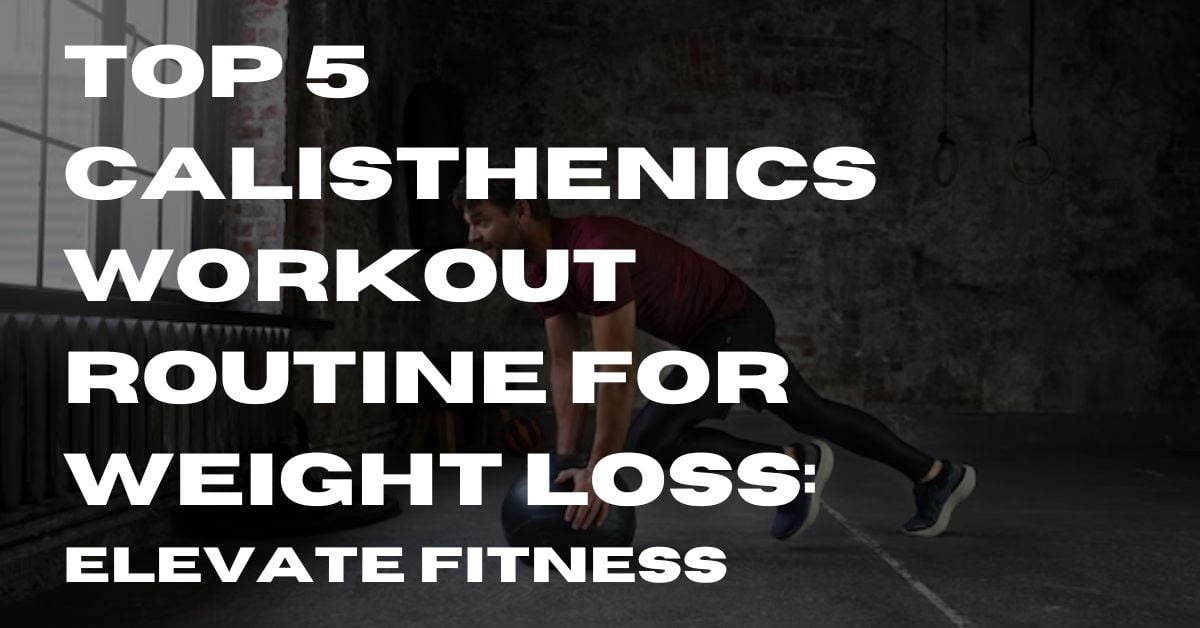
27 thoughts on “Top 5 Calisthenics Workout for Weight Loss: Elevate Fitness”